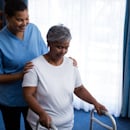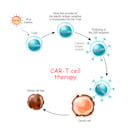
The RAPID Model- Assessment Part 2
As we continue our series on Psychological First Aid (PFA), we reach the critical element of Assessment. To review the first two articles please click on the links below
- Overview of Critical Incident Stress Management (CISM) .
- The following article is the first in a six-part series that delves deeper into CISM, the RAPID model, and Psychological First Aid.
- The RAPID Model- Rapport
- Establishing rapport is an essential first part of any relationship; you are trying to build a trusting and helpful relationship with a person who may be experiencing the worst day of their life.
Psychological First Aid (PFA) is a compassionate and supportive presence designed to mitigate acute distress and assess the need for continued mental health care. PFA is not therapy, diagnosis, or treatment. John Hopkin’s program has developed an acronym, RAPID, to help guide you through PFA as well as self-care. RAPID:
- Rapport/Reflective/Active Listening
- Assessment
- Prioritization
- Intervention
- Disposition
(Everly, McCabe, Semon, Thompson, & Jonathan, 2014)
As members of the healthcare profession, we know that the process of helping others, especially in times of pandemics, disasters (natural or manmade) take a toll on each of us. Using a standardized process to help others in psychological stress will help the person in need and using a self-care model will help ensure we have the stamina, and psychological and physical stability to help those in need. This six-part series will discuss each segment of the acronym RAPID as well as self-care.
Part 2: Assessment
Following closely on the tails of last month’s article on The RAPID Model- Rapport we will now progress to the Assessment of basic physical and psychological needs. This assessment is derived from a guided conversation that is based on the survivor’s own narrative. It is punctuated with specific questions regarding the details of the event and the survivor’s reactions to the event. This is not a clinical assessment, instead, it is an assessment based on common sense allowing the survivor to tell you what happened and their reactions because of what happened (Everly, McCabe, Semon, Thompson, & Jonathan, 2014).
The assessment intervention is mainly centered on the unique needs of the person in distress. To create your intervention, you must listen very carefully to the survivor’s story. You will need to put the survivor’s status in context by asking specific questions when necessary, clarifying uncertain parts of the personal reactions, and ensuring that you question terms that you are not familiar with (Everly, McCabe, Semon, Thompson, & Jonathan, 2014).
There are three types of survivors you may encounter in the field, being able to identify these types will help you define your intervention for their specific needs. The three groups are:
- Eustress
- Distress
- Dysfunction
(Everly, McCabe, Semon, Thompson, & Jonathan, 2014)
The questions to be asked to elicit which stage your survivor is in are:
- What is it you need to do today?
- Can you do it?
Eustress:
The eustress group can complete their activities of daily living. They may not be happy about the adversity, but they are moving on within the context of the disaster. This group requires no additional action. Continue to observe.
Distress:
The distress group usually will move on without any direct aid whatsoever as the distress is benign and mild. This group may need assistance with physical aid, shelter, food, or clothing. However, some survivors will decompensate, losing their ability to function or achieve the activities of daily living. The survivors in this group bear close monitoring as they may move into the Dysfunction group.
Dysfunction:
The dysfunction group has a severe and incapacitating impairment, which does not allow them to complete their activities of daily living. In this instance, you will need to assist them either directly or indirectly to complete the tasks at hand. (Everly, McCabe, Semon, Thompson, & Jonathan, 2014)
60 to 90% of all survivors experience acute distress and will require continuous observation or monitoring. The dysfunction group will range between 5 to 49% of the survivors and will require the most monitoring and assistance. It is important that our assessments identify and help those survivors most in need (Everly, McCabe, Semon, Thompson, & Jonathan, 2014).
Distinguishing distress from dysfunction is an important part of your assessment. The following table will give you a few examples.
|
Important Note: This is not an inclusive or comprehensive list.
In summary, it is important that we do not interfere with the survivor’s natural resilience. It is possible to interfere with the survivor’s resilient recovery by not understanding them or the context. We as healthcare providers need to remain open-minded and neutral when listening to the survivor’s stories to be able to assist the individual survivor.
The next article in the series is Prioritization. Each step of the acronym RAPID is essential so be sure to read each of the six articles.
References
Everly, G.S., McCabe, L.O., Semon, N.L., Thompson, C.B, Jonathan, L. (2014). The development of a model of psychological first aid for non–mental health trained public health personnel;
The Johns Hopkins RAPID-PFA.




